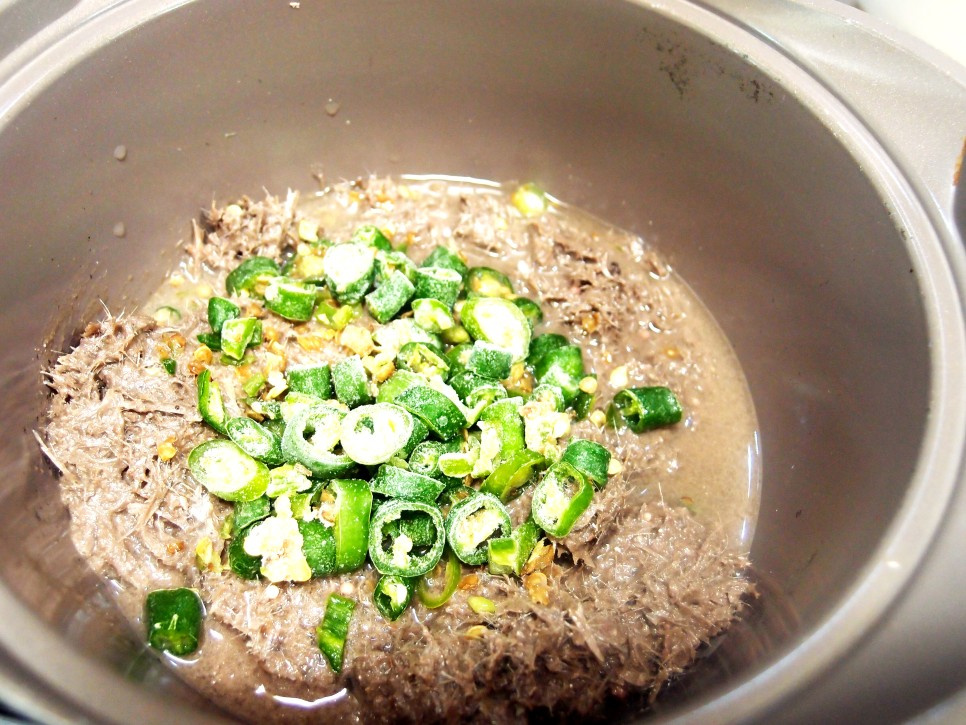Rich Myeolchi-jeot Sauce (Fermented Anchovy Dip)
#MyeolchiJeot #FermentedAnchovySauce #HomemadeSauce #SamgyeopsalMustHave #PorkPartner

Create a deeply flavorful Myeolchi-jeot sauce right in your own kitchen! This recipe guides you through extracting a rich broth from fermented anchovies for kimchi seasoning, then utilizing the leftover solids to craft a robust Myeolchi-jeot sauce. You can achieve a smooth consistency by blending, or by simmering the solids again for an intensified flavor. The finished sauce is an exquisite pairing for any pork dish, including samgyeopsal (pork belly) and moksal (pork neck). Dipping your grilled meats into this sauce elevates the dining experience to a whole new level. Myeolchi-jeot is a popular condiment increasingly found in Korean BBQ restaurants, so bring this delicious secret to your table!
Ingredients for Anchovy Broth- 1kg whole fermented anchovies (for broth)
- 1/2 cup anchovy sauce (fish sauce)
- 1 cup natural seasoning seafood broth
Ingredients for Myeolchi-jeot Sauce- 2 cups prepared anchovy broth
- 1 cup natural seasoning seafood broth
- 4 Cheongyang peppers, finely chopped
- 1 Tbsp green onion, finely chopped
- 2 Tbsp minced garlic
- 2 cups prepared anchovy broth
- 1 cup natural seasoning seafood broth
- 4 Cheongyang peppers, finely chopped
- 1 Tbsp green onion, finely chopped
- 2 Tbsp minced garlic
Cooking Instructions
Step 1
These are the whole fermented anchovies that form the base of our Myeolchi-jeot sauce. Using whole ‘yukjeot’ (a type of fermented anchovy) will impart a deeper umami flavor.

Step 2
Pour the whole fermented anchovies directly into a wide pot. Ensure the pot is large enough to accommodate all the anchovies.

Step 3
Add the natural seasoning seafood broth and anchovy sauce to the pot. Bring to a vigorous boil over high heat. Continue to simmer until the anchovies have mostly disintegrated and their bones are tender and broken down. This simmering process should last at least 20-30 minutes to fully extract the anchovies’ essence.

Step 4
Once the anchovies have broken down and the liquid has thickened into a broth, your anchovy broth is ready. Let it cool completely. It’s important to let it cool down before proceeding to the next steps for safety.

Step 5
You now have an anchovy broth where even the bones have softened. Simmering for longer will result in an even smoother and more concentrated Myeolchi-jeot sauce. Alternatively, after cooling, you can blend the broth in a mixer until completely smooth for a lump-free sauce. Adjust the consistency to your preference.

Step 6
This step is for preparing kimchi seasoning, where we separate the solids for making the Myeolchi-jeot sauce. Strain the cooked anchovy broth through a fine sieve, collecting the clear liquid. The leftover anchovy solids are reserved for making the Myeolchi-jeot sauce. The liquid can be used directly in your kimchi seasoning.

Step 7
These are the anchovy solids left after straining. While some parts might still resemble anchovy pieces, these solids will provide an even richer flavor to the Myeolchi-jeot sauce. I will simmer these solids again to further concentrate the flavor, reduce the saltiness of the sauce, and enhance its depth.

Step 8
Add a little more natural seasoning seafood broth to the reserved anchovy solids. Then, add the finely chopped Cheongyang peppers, green onion, and sliced garlic, and bring it to a boil. This will create a rich Myeolchi-jeot sauce where all the flavors meld together. If you prefer not to add the aromatics directly into the main sauce, you can simmer just the anchovy solids again to concentrate them, then store the sauce in an airtight container in the refrigerator. When you’re ready to grill meat, take out the desired amount of sauce, add fresh chopped Cheongyang peppers, garlic, and green onion to a small pot, boil them together with the sauce until cooked, and then dip your meat. This method allows you to enjoy the fresh flavors of the aromatics and the concentrated sauce separately, maintaining the sauce’s vibrant taste.



